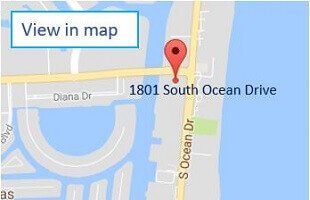Or sign in with
Buoyant force also explains why we can lift objects underwater more easily than on land. An object with the same density as a particular fluid is considered neutrally buoyant. When that object is completely submerged, the buoyancy force and gravitational force are equal regardless of what depth the object is suspended at.
The buoyant force will be the mass of displaced air times the acceleration due to gravity. A consequence of Archimedes’ principle is that, if the density of the object is less than https://traderoom.info/ the density of the fluid, the object floats in that fluid. This is because the weight of the fluid it is able to displace if fully submerged would be greater than its own weight.
Liquids do not compress as easily, but slight density differences in them can be generated in a similar manner. A liquid is a type of fluid, but fluids are defined more broadly as a substance that has no fixed shape and that can flow. If the weight is equal to or less than the upthrust, it floats. Prior to the discovery of buoyancy, it was believed that an object’s shape determined whether or not it would float. An object of any shape can be approximated as a group of cubes in contact with each other, and as the size of the cube is decreased, the precision of the approximation increases. The limiting case for infinitely small cubes is the exact equivalence.
Neutral buoyancy takes place when the weight of the immersed object is equal to the fluid displaced. The dive taken by the scuba diver is an ideal example of neutral buoyancy. It can also be said that the magnitude of the upward force is equivalent to the difference in the pressure of the topmost and the last layer and equivalent to the weight of the fluid displaced. Any object, totally or partially immersed in a fluid or liquid, is buoyed up by a force equal to the weight of the fluid displaced by the object.
For instance, surface tension is an additional force applied to the fluid-object interface, which affects both the dynamics (e.g. sinking object) and the statics (e.g. sunk object) of the problem. The dynamics of buoyancy are also highly affected by the viscosity of the fluid and the turbulence of the flow. Any pressure on the sides of the cube will cancel with the opposite side.
In both cases, the phase with higher density will tend to move downward. This means that a warm fluid will “float” when immersed in a region of the same fluid but colder. In this case, we will not speak of “floating” or “sinking” but of upward streams of hot fluid and downward streams of cold fluid. This phenomenon is usually coupled with thermal analyses, and it is the base of many applications such as meteorology, steel casting, and house heating/cooling.
There are two forces acting on the life jacket – its weight and the force of the water pushing upwards on it – the upthrust. An object, here a coin, is weighed in air and then weighed again while submerged in a liquid. The density of the coin, an indication of its authenticity, can be calculated if the fluid density is known. We can use this same technique to determine the density of the fluid if the density of the coin is known.
The buoyant force is the reason some objects float and all objects fall more slowly when dropped in a liquid. It can be the case that forces other than just buoyancy and gravity come into play. This is the case if the object is restrained or if the object sinks to the solid floor.
The force that provides the pressure of a fluid acts on a body perpendicular to the surface of the body. In other words, the force due to the pressure at the bottom is pointed up, while at the top, the force due to the pressure is pointed down; the forces due to the pressures at the sides are pointing into the body. When the weight of the fluid displaced is less than the object’s weight, it is called negative buoyancy. As a submarine expels water from its buoyancy tanks, it rises because its volume is constant (the volume of water it displaces if it is fully submerged) while its mass is decreased. Negative buoyancy is when the immersed object is denser than the fluid displaced which results in the sinking of the object. Positive buoyancy is when the immersed object is lighter than the fluid displaced, and this is the reason why the object floats.
Angled surfaces do not nullify the analogy as the resultant force can be split into orthogonal components and each dealt with in the same way.
According to this principle, when an object is immersed in a fluid, partially or wholly, it displaces the fluid. The weight lost by the object is equal to the weight of an equal volume of the displaced fluid. Buoyancy is the force that enables boats and beach balls to float on water. The term buoyant force refers to the upward-directed force that a fluid (either a liquid or a gas) exerts on an object that is partially or completely immersed in the fluid.
The weight of the displaced fluid is directly proportional to the volume of the displaced fluid (if the surrounding fluid is of uniform density). Thus, among completely submerged objects with equal masses, objects review broker binary.com with greater volume have greater buoyancy. This upward force exerted by the fluid opposes the weight of an object immersed in a fluid. As we know, the pressure in a fluid column increases with depth.

 1801 South Ocean Drive, Suite C Hallandale Beach, FL 33009
1801 South Ocean Drive, Suite C Hallandale Beach, FL 33009
For more information call us:
(786) 797.0441 or or: 305 984 5805